Kitap İncelemesi | Çok Yönlü - Başarı İçin Neden Çok Şeyle İlgilenmeliyiz? by David Epstein
Yayın: 14 Mayıs 2024

David Epstein'in Range kitabını okumayı yeni bitirdim ve genel olarak harika bir kitaptı!
Hikayelerin kendimle özellikle ilgili olduğunu buldum, çünkü akranlarımın aksine, Türkiye'de Ceza Adaleti okumaya zaman ayırdığım için üniversiteden 25 yaşında mezun oldum ve daha sonra ana dersimi İnşaat Mühendisliği'ne değiştirdim.
Kitabın ana önerisi, tekrarlayan eylemler ve hızlı geri bildirim döngülerine sahip bazı alanlar dışında, erken yaşta bir alanı özelleştirmemizin gerekmediğidir.
Bu bir adım daha ileri giderek, erken yaşta özelleştirme kısa vadeli faydalar sağlayabilir, örneğin iş bulmayı kolaylaştırabilir, ancak uzun vadede genellikle daha zayıf bir seçenektir.
Bu, kişi ile işi arasındaki uyumu ölçen bir kavram olan maç kalitesi ile açıklanmaktadır. Yetişkinler bile bu yaşamda kendi çağrılarını bulmakta zorlanıyorken, bir çocuğun erken yaşta bir alan bulup o alanda uzmanlaşmasını beklemek saçma olacaktır.
Ayrıca, alanlar arasında gezinenler için umut verir. Örneğin, İnşaat Mühendisliği alanında ana dersimi yaparken, mezun olduktan sonra bu alanda kolayca iş bulabilirdim.
Ancak, inşaat mühendisliğinin benim için olmadığını fark ettim ve kodlamaya daha fazla ilgi duyduğumu anladım. Bu yüzden, maç kalitemi artırmak için boş zamanlarımda kodlama çalıştım ve sonunda bir veri bilimcisi oldum.
Belki de veri bilimi benim için bir son durak gibi değil, ama kodlama ve yazılım mühendisliğinin bu yaşamda benim çağrım olduğunu biliyorum.
Çünkü bunu hafta sonları eğlence olarak yaparım ve hiç yorulmam. İyi maç kalitesine sahip olup olmadığınızı belirlemek için iyi bir test olmalıdır: Hafta sonları bile bunu yapıyor musunuz?
İş ve yaşam arasında bir çizgi çizmek zorunda hissediyor musunuz? Çünkü, eğer İŞ yaşamın dışında düşünüyorsanız, bu iyi bir maç kalitesi değil derim. Çünkü benim için kodlama yaşamın bir parçasıdır, bu yüzden bu kadar yakından iç içe geçmiş iki şey arasında bir çizgi çizmeye asla teşebbüs etmem.
Tabii ki, işvereniniz size bir köle gibi mi davraniyor, bu başka bir hikaye. Ama benim şanslı olduğum, beni sürekli olarak uyararak tutan dostane ama rekabetçi bir ortamda çalışmaktır.
Öte yandan, birçok farklı alanlarda denemek, alanınızda büyük bir atılım yaratmanın anahtarı gibi görünüyor. Nobel Ödülü sahiplerinin çoğu yüksek bir uzmanlık derecesine sahip olmasına rağmen, ana alanlarının dışındaki diğer alanlarda da zaman geçirmeye eğilimlidirler. Bu şekilde, mucitler kendi alanlarındaki bir ilişkisiz alandan analogileri kullanabilir ve tek bir alanda sıkışıp kalan insanların düşünemeyeceği çözümler bulabilirler.
Bunun için zaten sezgisel bir hisse sahiptim, çünkü birçok yıl deneyimi olan insanların yeni zorluklara karşı sıradan çözümler bulduklarını gördüm. Zaman zaman deneyimlerinize köle olursunuz ve meydan okumalar hızla değişirken aynı denenmiş ve test edilmiş araçları kullanmak istersiniz.

Değerlendirme
Genel olarak bu kitabı 5 üzerinden 5 puan verirdim. Çünkü halk tarafından henüz tam olarak anlaşılmamış bir konuya değiniyor. Dahası, kitap bazen sadece şeylere yapışmanız gerektiği konusundaki genel bilgeliğe karşı çıkıyor.
Engellere karşı yapışmak için savunan Grit gibi kitaplarımız var.
Bu, eğer iyi bir maç kaliteniz varsa, doğrudur. Eğer durum böyle değilse, yapmaya devam etmeyi bırakmalı ve keşfetmeye devam etmelisiniz. Hayat, hoşlanmadığınız bir şeyi yapmak için yeterince uzun değil.
Ortak bilgeliğe karşı gitmek cesaret ve çok sayıda araştırma gerektirir ve David Epstein bu kitapta bunu mükemmel bir şekilde yapıyor. Bu kitabı okuyarak çok şey öğreneceğinizi eminim.

Kitaptan Favori Alıntı
Bu kitaptaki en iyi alıntı, kalıcı sorunları nasıl çözebileceğimize dair bize bir bakış sunuyor. Bazen, çözüme odaklanmak hatasına düşeriz, ancak gerçekten doğru problemi çözüp çözmediğimizi bilmiyoruz. Yanlış problemi çözmek için harcanan her zaman boşa harcanmış zaman demektir.
“ Şimdiye kadar yapılmış en çok alıntı yapılan uzman problem çözme çalışmalarından birinde, disiplinlerarası bir ekip bilim adamı oldukça basit bir sonuca vardı: başarılı problem çözücüler, bir problemi karşılaşmadan önce derin yapıyı belirleme konusunda daha yeteneklidirler stratejiyi ona eşleştirmek. Daha az başarılı problem çözücüler [...] problemleri yalnızca yüzeysel, açıkça belirtilmiş özellikler, gibi klasikleşmiş çözümleri kullanarak zihinsel olarak sınıflandırırlar, alan bağlamı. En iyi performans gösterenler için, problem çözme "problemin yazılmasıyla başlar." dediler. Eğitim öncüsü John Dewey bunu Mantık, İnceleme Teorisi'nde şöyle ifade etti, “iyi bir problem haline getirilen bir sorunun yarısı çözülmüştür.” „
Begendigim Bolumler
Kitabı okurken begendigim bölümler aşağıdaki gibidir:
- He was engaging in “deliberate practice,” the only kind that counts in the now-ubiquitous ten-thousand-hours rule to expertise. The “rule” represents the idea that the number of accumulated hours of highly specialized training is the sole factor in skill development, no matter the domain. Deliberate practice, according to the study of thirty violinists that spawned the rule, occurs when learners are “given explicit instructions about the best method,” individually supervised by an instructor, supplied with “immediate informative feedback and knowledge of the results of their performance,” and “repeatedly perform the same or similar tasks.” Reams of work on expertise development shows that elite athletes spend more time in highly technical, deliberate practice each week than those who plateau at lower levels: Tiger has come to symbolize the idea that the quantity of deliberate practice determines success—and its corollary, that the practice must start as early as possible.
- body of work demonstrating that learning itself is best done slowly to accumulate lasting knowledge, even when that means performing poorly on tests of immediate progress. That is, the most effective learning looks inefficient; it looks like falling behind.
- And yet a tech founder who is fifty years old is nearly twice as likely to start a blockbuster company as one who is thirty, and the thirty-year-old has a better shot than a twenty-year-old. Researchers at Northwestern, MIT, and the U.S. Census Bureau studied new tech companies and showed that among the fastest-growing start-ups, the average age of a founder was forty-five when the company was launched.
- Narrow experience made for better chess and poker players and firefighters, but not for better predictors of financial or political trends, or of how employees or patients would perform. The domains Klein studied, in which instinctive pattern recognition worked powerfully, are what psychologist Robin Hogarth termed “kind” learning environments. Patterns repeat over and over, and feedback is extremely accurate and usually very rapid. In golf or chess, a ball or piece is moved according to rules and within defined boundaries, a consequence is quickly apparent, and similar challenges occur repeatedly. Drive a golf ball, and it either goes too far or not far enough; it slices, hooks, or flies straight. The player observes what happened, attempts to correct the error, tries again, and repeats for years. That is the very definition of deliberate practice, the type identified with both the ten-thousand-hours rule and the rush to early specialization in technical training. The learning environment is kind because a learner improves simply by engaging in the activity and trying to do better. Kahneman was focused on the flip side of kind learning environments; Hogarth called them “wicked.” In wicked domains, the rules of the game are often unclear or incomplete, there may or may not be repetitive patterns and they may not be obvious, and feedback is often delayed, inaccurate, or both. In the most devilishly wicked learning environments, experience will reinforce the exact wrong lessons.
- Moravec’s paradox: machines and humans frequently have opposite strengths and weaknesses.
- In the end, Kasparov did figure out a way to beat the computer: by outsourcing tactics, the part of human expertise that is most easily replaced, the part that he and the Polgar prodigies spent years honing.
- But the game’s strategic complexity provides a lesson: the bigger the picture, the more unique the potential human contribution. Our greatest strength is the exact opposite of narrow specialization. It is the ability to integrate broadly.
- “AI systems are like savants.” They need stable structures and narrow worlds.
- He studied high-powered consultants from top business schools for fifteen years, and saw that they did really well on business school problems that were well defined and quickly assessed. But they employed what Argyris called single-loop learning, the kind that favors the first familiar solution that comes to mind. Whenever those solutions went wrong, the consultant usually got defensive. Argyris found their “brittle personalities” particularly surprising given that “the essence of their job is to teach others how to do things differently.”
- In research in the game of bridge where the order of play was altered, experts had a more difficult time adapting to new rules than did nonexperts. When experienced accountants were asked in a study to use a new tax law for deductions that replaced a previous one, they did worse than novices. Erik Dane, a Rice University professor who studies organizational behavior, calls this phenomenon “cognitive entrenchment.” His suggestions for avoiding it are about the polar opposite of the strict version of the ten-thousand-hours school of thought: vary challenges within a domain drastically, and, as a fellow researcher put it, insist on “having one foot outside your world.”
- “To him who observes them from afar,” said Spanish Nobel laureate Santiago Ramón y Cajal, the father of modern neuroscience, “it appears as though they are scattering and dissipating their energies, while in reality they are channeling and strengthening them.” The main conclusion of work that took years of studying scientists and engineers, all of whom were regarded by peers as true technical experts, was that those who did not make a creative contribution to their field lacked aesthetic interests outside their narrow area. As psychologist and prominent creativity researcher Dean Keith Simonton observed, “rather than obsessively focus[ing] on a narrow topic,” creative achievers tend to have broad interests. “This breadth often supports insights that cannot be attributed to domain-specific expertise alone.”
- They drew on outside experiences and analogies to interrupt their inclination toward a previous solution that may no longer work. Their skill was in avoiding the same old patterns. In the wicked world, with ill-defined challenges and few rigid rules, range can be a life hack.
- Computer programmers pile layers of abstraction. (They do very well on Raven’s.)
- Almost none of the students in any major showed a consistent understanding of how to apply methods of evaluating truth they had learned in their own discipline to other areas. In that way, the students had something in common with Luria’s remote villagers—even the science majors were typically unable to generalize research methods from their own field to other fields. Flynn’s conclusion: “There is no sign that any department attempts to develop [anything] other than narrow critical competence.”
- Three-quarters of American college graduates go on to a career unrelated to their major—a trend that includes math and science majors—after having become competent only with the tools of a single discipline.
- The ultimate lesson of the question was that detailed prior knowledge was less important than a way of thinking.
- In totality, the picture is in line with a classic research finding that is not specific to music: breadth of training predicts breadth of transfer. That is, the more contexts in which something is learned, the more the learner creates abstract models, and the less they rely on any particular example. Learners become better at applying their knowledge to a situation they’ve never seen before, which is the essence of creativity.
- (There is a specific Japanese word to describe chalkboard writing that tracks conceptual connections over the course of collective problem solving: bansho.)
- Asked whether a/5 or a/8 is greater, 53 percent of students answered correctly, barely better than guessing. Asked to explain their answers, students frequently pointed to some algorithm.
- for learning that is both durable (it sticks) and flexible (it can be applied broadly), fast and easy is precisely the problem.
- Kornell was explaining the concept of “desirable difficulties,” obstacles that make learning more challenging, slower, and more frustrating in the short term, but better in the long term. Excessive hint-giving, like in the eighth-grade math classroom, does the opposite; it bolsters immediate performance, but undermines progress in the long run.
- Being forced to generate answers improves subsequent learning even if the generated answer is wrong. It can even help to be wildly wrong. Metcalfe and colleagues have repeatedly demonstrated a “hypercorrection effect.” The more confident a learner is of their wrong answer, the better the information sticks when they subsequently learn the right answer. Tolerating big mistakes can create the best learning opportunities.*
- The overall experiment results went like this: the more hints that were available during training, the better the monkeys performed during early practice, and the worse they performed on test day. For the lists that Macduff spent three days practicing with automatic hints, he got zero correct. It was as if the pair had suddenly unlearned every list that they practiced with hints. The study conclusion was simple: “training with hints did not produce any lasting learning.”
- That structure makes intuitive sense, but it forgoes another important desirable difficulty: “spacing,” or distributed practice. It is what it sounds like—leaving time between practice sessions for the same material. You might call it deliberate not-practicing between bouts of deliberate practice. “There’s a limit to how long you should wait,” Kornell told me, “but it’s longer than people think. It could be anything, studying foreign language vocabulary or learning how to fly a plane, the harder it is, the more you learn.” Space between practice sessions creates the hardness that enhances learning. One study separated Spanish vocabulary learners into two groups—a group that learned the vocab and then was tested on it the same day, and a second that learned the vocab but was tested on it a month later. Eight years later, with no studying in the interim, the latter group retained 250 percent more. For a given amount of Spanish study, spacing made learning more productive by making it easy to make it hard. It does not take nearly that long to see the spacing effect. Iowa State researchers read people lists of words, and then asked for each list to be recited back either right away, after fifteen seconds of rehearsal, or after fifteen seconds of doing very simple math problems that prevented rehearsal. The subjects who were allowed to reproduce the lists right after hearing them did the best. Those who had fifteen seconds to rehearse before reciting came in second. The group distracted with math problems finished last. Later, when everyone thought they were finished, they were all surprised with a pop quiz: write down every word you can recall from the lists. Suddenly, the worst group became the best. Short-term rehearsal gave purely short-term benefits. Struggling to hold on to information and then recall it had helped the group distracted by math problems transfer the information from short-term to long-term memory. The group with more and immediate rehearsal opportunity recalled nearly nothing on the pop quiz. Repetition, it turned out, was less important than struggle.
- For a given amount of material, learning is most efficient in the long run when it is really inefficient in the short run. If you are doing too well when you test yourself, the simple antidote is to wait longer before practicing the same material again, so that the test will be more difficult when you do. Frustration is not a sign you are not learning, but ease is.
- In 2007, the U.S. Department of Education published a report by six scientists and an accomplished teacher who were asked to identify learning strategies that truly have scientific backing. Spacing, testing, and using making-connections questions were on the extremely short list. All three impair performance in the short term.
- The economists suggested that the professors who caused short-term struggle but long-term gains were facilitating “deep learning” by making connections.
- Psychologist Robert Bjork first used the phrase “desirable difficulties” in 1994. Twenty years later, he and a coauthor concluded a book chapter on applying the science of learning like this: “Above all, the most basic message is that teachers and students must avoid interpreting current performance as learning. Good performance on a test during the learning process can indicate mastery, but learners and teachers need to be aware that such performance will often index, instead, fast but fleeting progress.”
- Toward the end of the eighth-grade math class that I watched with Lindsey Richland, the students settled into a worksheet for what psychologists call “blocked” practice. That is, practicing the same thing repeatedly, each problem employing the same procedure. It leads to excellent immediate performance, but for knowledge to be flexible, it should be learned under varied conditions, an approach called varied or mixed practice, or, to researchers, “interleaving.” Interleaving has been shown to improve inductive reasoning. When presented with different examples mixed together, students learn to create abstract generalizations that allow them to apply what they learned to material they have never encountered before. For example, say you plan to visit a museum and want to be able to identify the artist (Cézanne, Picasso, or Renoir) of paintings there that you have never seen. Before you go, instead of studying a stack of Cézanne flash cards, and then a stack of Picasso flash cards, and then a stack of Renoir, you should put the cards together and shuffle, so they will be interleaved. You will struggle more (and probably feel less confident) during practice, but be better equipped on museum day to discern each painter’s style, even for paintings that weren’t in the flash cards.
- The feeling of learning, it turns out, is based on before-your-eyes progress, while deep learning is not. “When your intuition says block,” Kornell told me, “you should probably interleave.”
- Desirable difficulties like testing and spacing make knowledge stick. It becomes durable. Desirable difficulties like making connections and interleaving make knowledge flexible, useful for problems that never appeared in training. All slow down learning and make performance suffer, in the short term.
- Learning deeply means learning slowly.
- In a wicked world, relying upon experience from a single domain is not only limiting, it can be disastrous.
- If you’re asked to predict whether a particular horse will win a race or a particular politician will win an election, the more internal details you learn about any particular scenario—physical qualities of the specific horse, the background and strategy of the particular politician—the more likely you are to say that the scenario you are investigating will occur.
- Netflix came to a similar conclusion for improving its recommendation algorithm. Decoding movies’ traits to figure out what you like was very complex and less accurate than simply analogizing you to many other customers with similar viewing histories. Instead of predicting what you might like, they examine who you are like, and the complexity is captured therein. Interestingly, if the researchers used only the single film that the movie fans ranked as most analogous to the new release, predictive power collapsed. What seemed like the single best analogy did not do well on its own. Using a full “reference class” of analogies—the pillar of the outside view—was immensely more accurate.
- In one of the most cited studies of expert problem solving ever conducted, an interdisciplinary team of scientists came to a pretty simple conclusion: successful problem solvers are more able to determine the deep structure of a problem before they proceed to match a strategy to it. Less successful problem solvers are more like most students in the Ambiguous Sorting Task: they mentally classify problems only by superficial, overtly stated features, like the domain context. For the best performers, they wrote, problem solving “begins with the typing of the problem.” As education pioneer John Dewey put it in Logic, The Theory of Inquiry, “a problem well put is half-solved.”
- A man, too, he exhorted, “doesn’t always know himself what he could do, but he feels by instinct, I’m good for something, even so! . . . I know that I could be a quite different man! . . . There’s something within me, so what is it!”
- An individual starts with no knowledge, tests various possible paths in a manner that provides information as quickly as possible, and increasingly refines decisions about where to allocate energy. The expression “young and foolish,” he wrote, describes the tendency of young adults to gravitate to risky jobs, but it is not foolish at all. It is ideal. They have less experience than older workers, and so the first avenues they should try are those with high risk and reward, and that have high informational value. Attempting to be a professional athlete or actor or to found a lucrative start-up is unlikely to succeed, but the potential reward is extremely high. Thanks to constant feedback and an unforgiving weed-out process, those who try will learn quickly if they might be a match, at least compared to jobs with less constant feedback. If they aren’t, they go test something else, and continue to gain information about their options and themselves.
- Persevering through difficulty is a competitive advantage for any traveler of a long road, but he suggested that knowing when to quit is such a big strategic advantage that every single person, before undertaking an endeavor, should enumerate conditions under which they should quit. The important trick, he said, is staying attuned to whether switching is simply a failure of perseverance, or astute recognition that better matches are available.
- Dark horses were on the hunt for match quality. “They never look around and say, ‘Oh, I’m going to fall behind, these people started earlier and have more than me at a younger age,’” Ogas told me. “They focused on, ‘Here’s who I am at the moment, here are my motivations, here’s what I’ve found I like to do, here’s what I’d like to learn, and here are the opportunities. Which of these is the best match right now? And maybe a year from now I’ll switch because I’ll find something better.’”
- Each dark horse had a novel journey, but a common strategy. “Short-term planning,” Ogas told me. “They all practice it, not long-term planning.”
- Career goals that once felt safe and certain can appear ludicrous, to use Darwin’s adjective, when examined in the light of more self-knowledge. Our work preferences and our life preferences do not stay the same, because we do not stay the same.
- The precise person you are now is fleeting, just like all the other people you’ve been.
- Rather than a grand plan, find experiments that can be undertaken quickly. “Test-and-learn,” Ibarra told me, “not plan-and-implement.”
- It might seem that nothing would be easier than deciding what you like, but it turns out to be hard, partly because it’s hard to get an accurate picture of most jobs. . . . Most of the work I’ve done in the last ten years didn’t exist when I was in high school. . . . In such a world it’s not a good idea to have fixed plans. And yet every May, speakers all over the country fire up the Standard Graduation Speech, the theme of which is: don’t give up on your dreams. I know what they mean, but this is a bad way to put it, because it implies you’re supposed to be bound by some plan you made early on. The computer world has a name for this: premature optimization. . . . . . . Instead of working back from a goal, work forward from promising situations. This is what most successful people actually do anyway. In the graduation-speech approach, you decide where you want to be in twenty years, and then ask: what should I do now to get there? I propose instead that you don’t commit to anything in the future, but just look at the options available now, and choose those that will give you the most promising range of options afterward.
- “I know who I am when I see what I do.”
- Virtually every good thing in my life I can trace back to a misfortune, so my feeling is you don’t know what’s good and what’s bad when things happen. You do not know. You have to wait to find out.”
- A person don’t know what he can do unless he tryes. Trying things is the answer to find your talent.”
- “Big innovation most often happens when an outsider who may be far away from the surface of the problem reframes the problem in a way that unlocks the solution.”
- Yokoi embarked on an approach he called “lateral thinking with withered technology.” Lateral thinking is a term coined in the 1960s for the reimagining of information in new contexts, including the drawing together of seemingly disparate concepts or domains that can give old ideas new uses. By “withered technology,” Yokoi meant tech that was old enough to be extremely well understood and easily available, so it didn’t require a specialist’s knowledge. The heart of his philosophy was putting cheap, simple technology to use in ways no one else considered. If he could not think more deeply about new technologies, he decided, he would think more broadly about old ones. He intentionally retreated from the cutting edge, and set to monozukuri.
- “If you’re working on well-defined and well-understood problems, specialists work very, very well,” he told me. “As ambiguity and uncertainty increases, which is the norm with systems problems, breadth becomes increasingly important.”
- In high-uncertainty domains—where the fruitful questions themselves were less obvious—teams that included individuals who had worked on a wide variety of technologies were more likely to make a splash. The higher the domain uncertainty, the more important it was to have a high-breadth team member. As with the molecular biology groups Kevin Dunbar studied that used analogical thinking to solve problems, when the going got uncertain, breadth made the difference.
- an individual creator who had worked in four or more genres was more innovative than a team whose members had collective experience across the same number of genres. Taylor and Greve suggested that “individuals are capable of more creative integration of diverse experiences than teams are.”
- He tried on ideas like Instagram filters until it was hard to tell which he actually believed.
- Gigerenzer’s simple conclusion about those projections, from some of the world’s most prominent specialists: “Forecasts of dollar-euro exchange rates are worthless.” In six of the ten years, the true exchange rate fell outside the entire range of all twenty-two bank forecasts.
- Dan Kahan has shown that more scientifically literate adults are actually more likely to become dogmatic about politically polarizing topics
- Starting with the details—the inside view—is dangerous. Hedgehog experts have more than enough knowledge about the minutiae of an issue in their specialty to do just what Dan Kahan suggested: cherry-pick details that fit their all-encompassing theories. Their deep knowledge works against them. Skillful forecasters depart from the problem at hand to consider completely unrelated events with structural commonalities rather than relying on intuition based on personal experience or a single area of expertise.
- Another aspect of the forecaster training involved ferociously dissecting prediction results in search of lessons, especially for predictions that turned out bad. They made a wicked learning environment, one with no automatic feedback, a little more kind by creating rigorous feedback at every opportunity. In Tetlock’s twenty-year study, both foxes and hedgehogs were quick to update their beliefs after successful predictions, by reinforcing them even more strongly. When an outcome took them by surprise, however, foxes were much more likely to adjust their ideas. Hedgehogs barely budged. Some hedgehogs made authoritative predictions that turned out wildly wrong, and then updated their theories in the wrong direction. They became even more convinced of the original beliefs that led them astray. “Good judges are good belief updaters,” according to Tetlock. If they make a bet and lose, they embrace the logic of a loss just as they would the reinforcement of a win. That is called, in a word: learning. Sometimes, it involves putting experience aside entirely.
- Dropping familiar tools is particularly difficult for experienced professionals who rely on what Weick called overlearned behavior. That is, they have done the same thing in response to the same challenges over and over until the behavior has become so automatic that they no longer even recognize it as a situation-specific tool. Research on aviation accidents, for example, found that “a common pattern was the crew’s decision to continue with their original plan” even when conditions changed dramatically.
- A team or organization that is both reliable and flexible, according to Weick, is like a jazz group. There are fundamentals—scales and chords—that every member must overlearn, but those are just tools for sensemaking in a dynamic environment. There are no tools that cannot be dropped, reimagined, or repurposed in order to navigate an unfamiliar challenge. Even the most sacred tools. Even the tools so taken for granted they become invisible.
- The formal, conformist company process rules were balanced out by an informal culture of individual autonomy in decision making and dissent from the typical way of doing things.
- Geveden, in his own way, was in favor of balancing the typical, formal process culture with a dose of informal individualism, as Kranz and von Braun once had. “The chain of communication has to be informal,” he told me, “completely different from the chain of command.” He wanted a culture where everyone had the responsibility to protest if something didn’t feel right. He decided to go prospecting for doubts.
- The instinct, often well-meaning, to use interventions that seem logical but that have not been shown to help may explain the finding of a 2015 study: patients with heart failure or cardiac arrest were less likely to die if they were admitted during a national cardiology conference, when thousands of top cardiologists were away. “At large cardiology conventions, my colleagues and I have often joked that the convention center would be the safest place in the world to have a heart attack,” cardiologist Rita F. Redberg wrote. “[The conference study] turned that analysis around.”
- The interface between specialties, and between creators with disparate backgrounds, has been studied, and it is worth defending. • • • When Northwestern and Stanford researchers analyzed the networks that give rise to creative triumph, they found what they deemed a “universal” setup. Whether they looked at research groups in economics or ecology, or the teams that write, compose, and produce Broadway musicals, thriving ecosystems had porous boundaries between teams.
- New collaborations allow creators “to take ideas that are conventions in one area and bring them into a new area, where they’re suddenly seen as invention,” said sociologist Brian Uzzi, Amaral’s collaborator. Human creativity, he said, is basically an “import/export business of ideas.”
- Teams that included members from different institutions were more likely to be successful than those that did not, and teams that included members based in different countries had an advantage as well.
- To recap: work that builds bridges between disparate pieces of knowledge is less likely to be funded, less likely to appear in famous journals, more likely to be ignored upon publication, and then more likely in the long run to be a smash hit in the library of human knowledge.
- start planning experiments. Your personal version of Friday night or Saturday morning experiments, perhaps.
- “It is an experiment, as all life is an experiment.”
- “Success in the knowledge economy comes to those who know themselves—their strengths, their values, and how they best perform.”
- rather than hiding diverse experience, explain it.
- Executives with more varied careers have also been found to be “more likely to have novel strategies, . . . which is key to a sustainable competitive advantage,”
- “Research has established pretty firmly that diverse groups of people are better at innovation and problem solving, but more recent research is finding that diverse career histories within a single person can also benefit performance.”
- So perhaps it would be a good idea for sites that host résumés, and organizations that review them, to include some function that allows users the chance to share their résumé as a narrative journey in which they can explain the lessons of their zigs and zags, rather than just list them as bullet points.
- Don’t confuse the healthy development of a work ethic with the premature commitment to a singular passion.”
- As Woods said in 2000: “To this day, my dad has never asked me to go play golf. I ask him. It’s the child’s desire to play that matters, not the parent’s desire to have the child play.”
- I recently came across a quote from Christopher Nolan—writer and director of films like Inception, Interstellar, and The Dark Knight—on finding a next project. “For me, it’s all about trying new things,” he said. “If you’re going to write, you want to read a lot before you write, without any purpose.” Of course, the purpose is to find something that stimulates you but that you couldn’t have known to look for—an interest you didn’t know you had. I think I’ll take that advice.
Bu blog İngilizce'den LLM ile çevrilmiştir. Herhangi bir belirsizlik durumunda İletişim sayfasından bana ulaşabilirsiniz.
Yorum bırak
Yorumlar
Şuan yorum yok.
Diğer bloglara bak
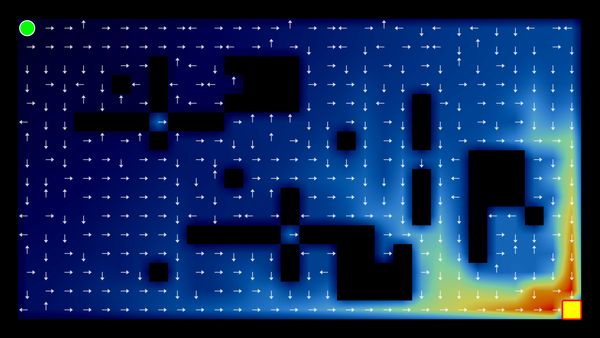
2025/07/07
Q-Learning: İnteraktif Pekiştirmeli Öğrenmenin Temeli
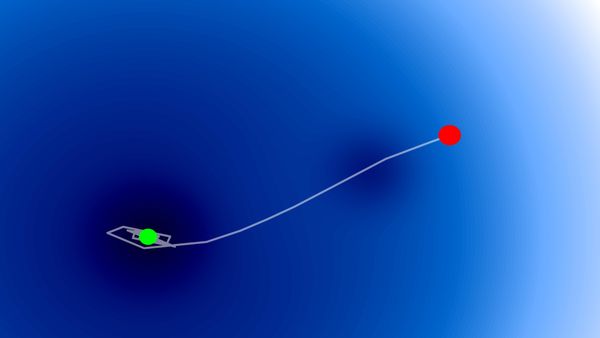
2025/07/06
Optimizasyon Algoritmaları: SGD, Momentum ve Adam

2025/07/05
Karakterlerden Kelimelere: Japonca BPE Tokenizer

2024/06/19
Svelte ve JavaScript ile Basit ve Dinamik Bir Tooltip Yaratma Yöntemi
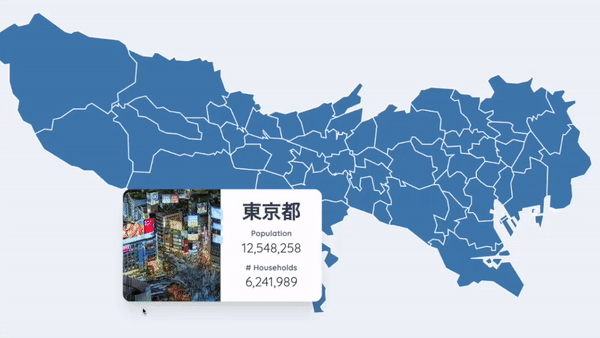
2024/06/17
JavaScript ile Tokyo'nun İnteraktif Haritasını Oluşturun
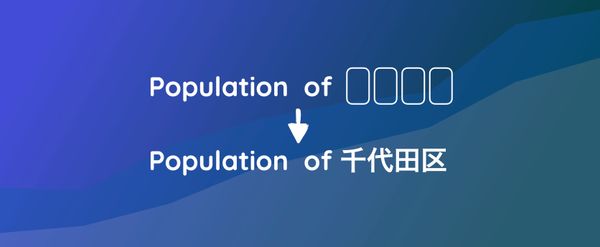
2024/06/14
Matplotlib'de Japonca Karakter Sorununu Çözme Yöntemi

2024/06/13
Kitap İncelemesi | Ötekiyle Konuşmak by Malcolm Gladwell

2024/06/07
Japonca'da En Sık Kullanılan 3.000 Kanji
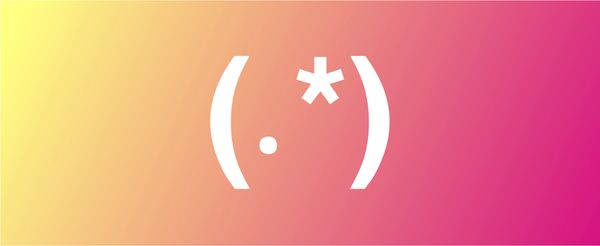
2024/06/07
VSCode'da Regex Kullanarak Replace Yapma Yöntemi
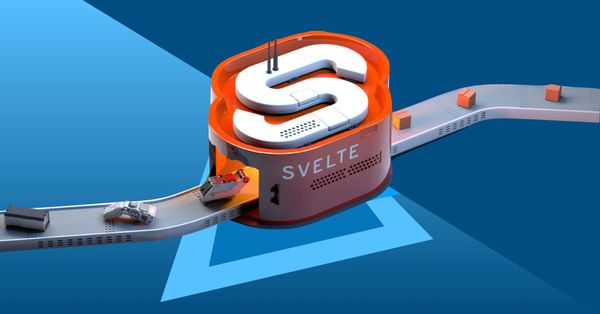
2024/06/06
Svelte'de Readable Store Kullanmayın
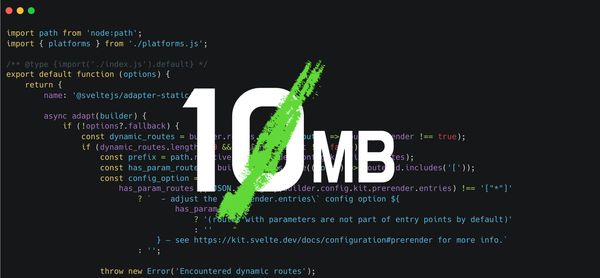
2024/06/05
Dosyaları Gzip ve Pako ile Sıkıştırarak Web Sitesinin Yükleme Hızını Artırın
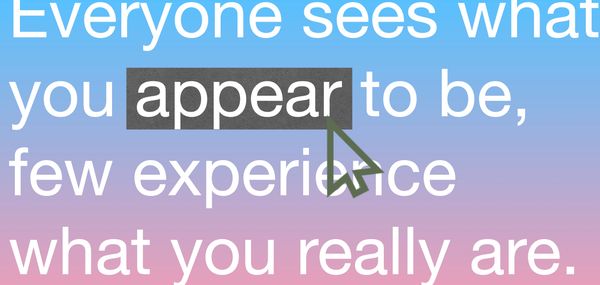
2024/05/31
Web Sayfasında Farenin Uzerinde Oldugu Kelimeyi JavaScript ile Bulun

2024/05/29
Svelte ve SVG ile Interaktif Harita Oluşturun
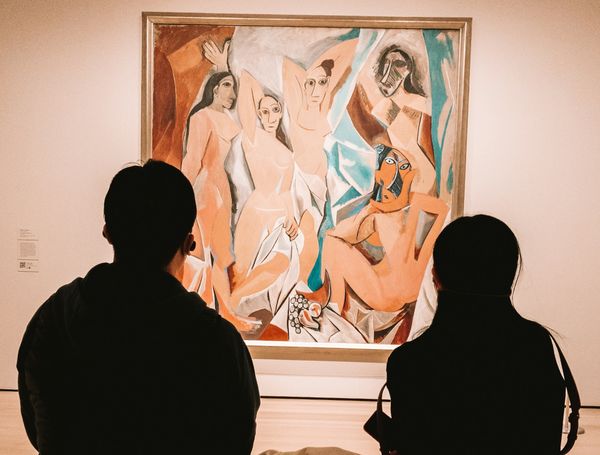
2024/05/28
Kitap İncelemesi | Geleneklere Uymayanlar Dünyayı Nasıl İleri Taşıyor? by Adam Grant & Sheryl Sandberg

2024/05/27
Javascript Kullanarak Sudoku Nasıl Çözülür?

2024/05/26
Web Siteme Gelen Trafiği Bir Ayda Nasıl 10 Kat Artırdım?

2024/05/24
Hayat Bisiklet Sürmek Gibidir
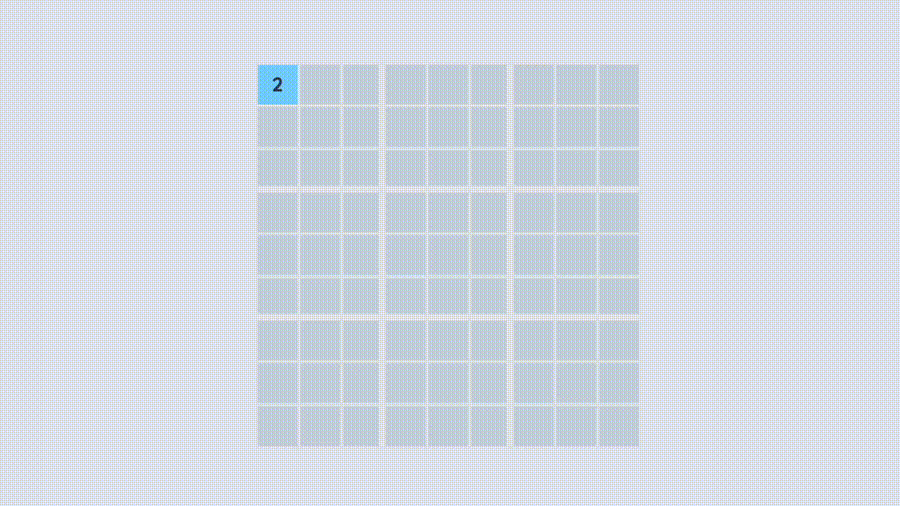
2024/05/19
JavaScript'te Backtracking Algoritması ile Tamamlanmış Sudoku Oluşturun

2024/05/16
Tailwind Neden Harikadır ve Web Geliştirmeyi Nasıl Kolay Hale Getirir?

2024/05/15
Python ve Git Hooks ile Otomatik Olarak Site Haritası Oluşturma
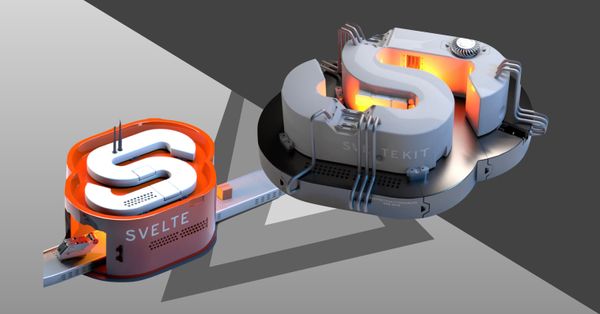
2024/05/13
Svelte ve SvelteKit nedir?
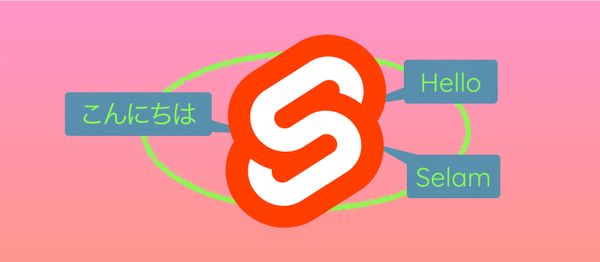
2024/05/12
SvelteKit ile Internationalization (Çoklu Dil Desteği)
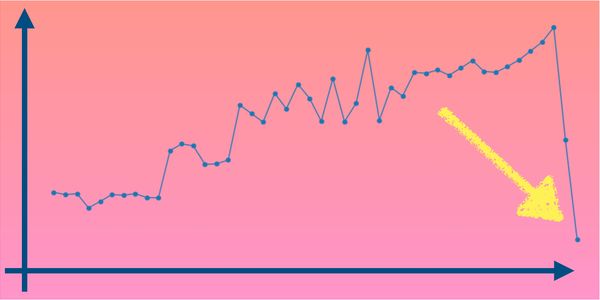
2024/05/11
Svelte'de Caching ile Deploy Süresini Azaltın

2024/05/10
Svelte ve Intersection Oberver ile Lazy-Load

2024/05/10
Genetik Algoritma İle Hisse Senedi Portföyü Optimizasyonu

2024/05/09
ShapeFile Formatini SVG Formatina Degistirme Yontemi
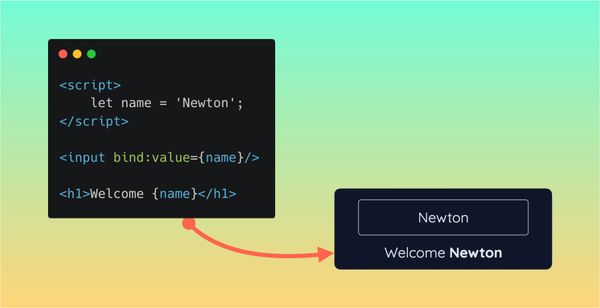
2024/05/08
Svelte'de Reaktivite: Variables, Binding, ve Key Fonksiyonu

2024/05/07
Kitap İncelemesi | Savaş Sanatı - Sun Tzu

2024/05/06
Specialistlik Bitti. Yaşasın Generalistlik!

2024/05/03
2018 Milletvekili Seçimlerinde Yaşa Göre Parti Eğilimi
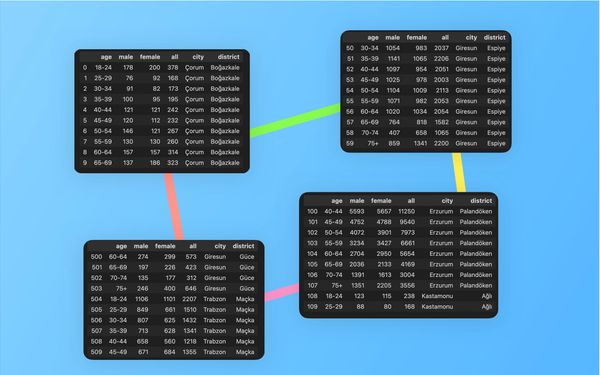
2024/05/01
Python Selenium Ile Secmen Veritabani Olusturma
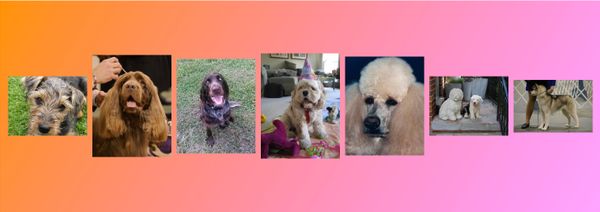
2024/04/30
Svelte ve Tailwind Ile Infinite Scroll Yapma Yontemi

2024/04/29
1 Yıl İçerisinde Japonca Konuşabilmek

2024/04/25
Svelte ve Tailwind ile Kullanıma Hazır Web Sitesi Şablonu

2024/01/29
Tembel Muhendisler Kotu Urunler Yapar

2024/01/28
Mukemmellik Uzerine

2024/01/28
MacBook'ta PDF'i PNG'ye Cevirme Yontemi
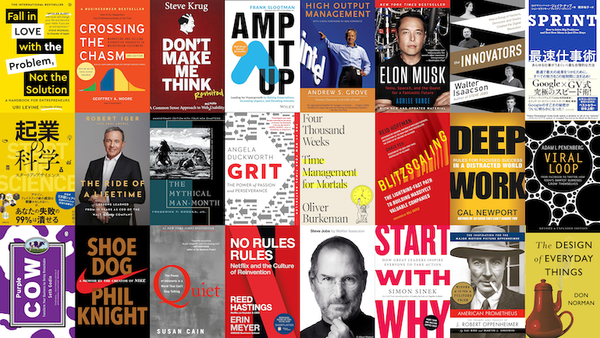
2023/12/31
2023'u Kapatiyoruz: Bu Yil Okunan 24 Kitap

2023/12/30
Python PIL Kullarak Foto Kolaji Yapma Yontemi

2024/01/09
Site Ziyaretcilerinin Alet ve Tarayicilarini Tespit Etme Yontemi

2024/01/19
ChatGPT Cevap Anatomisi
